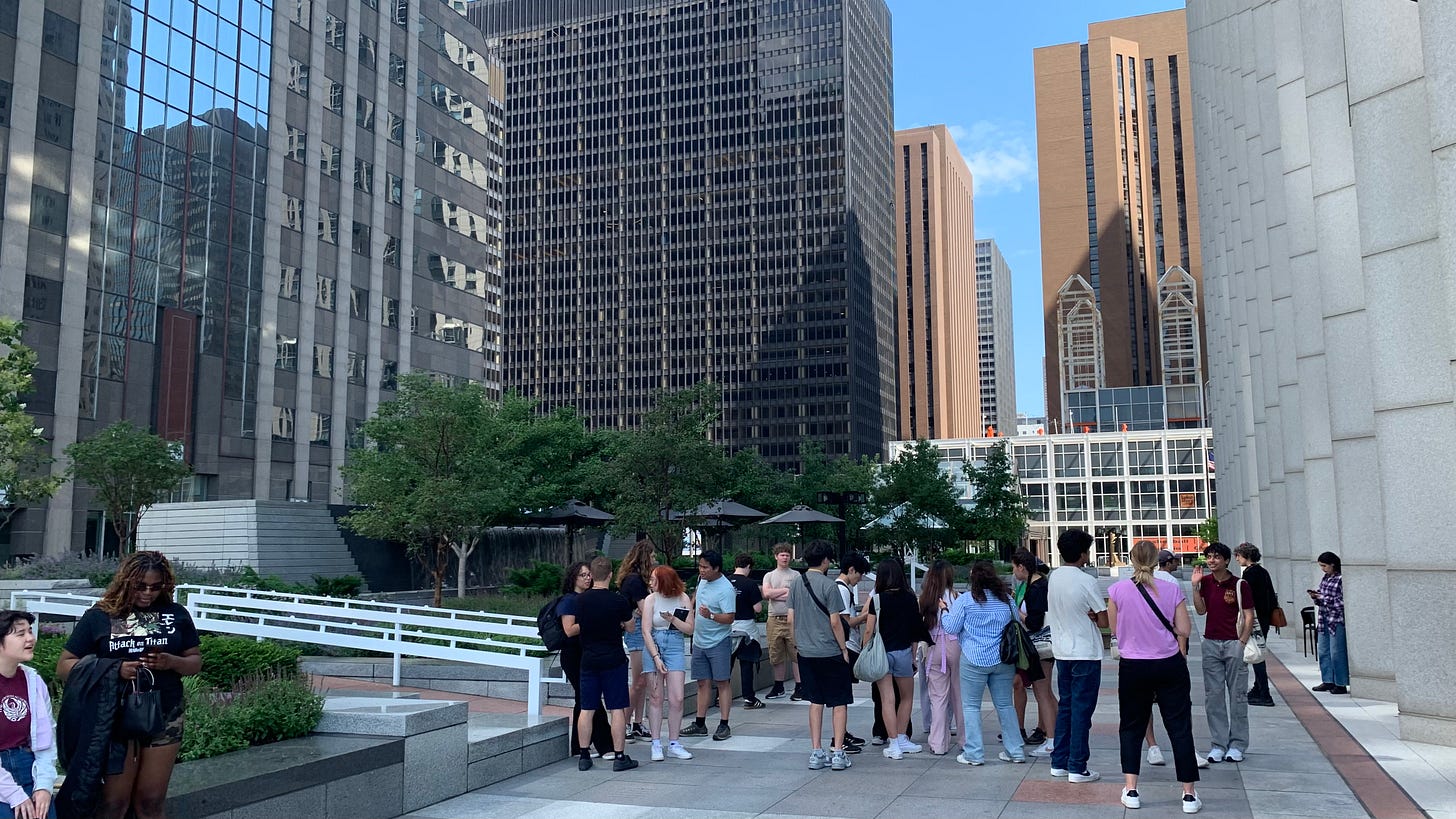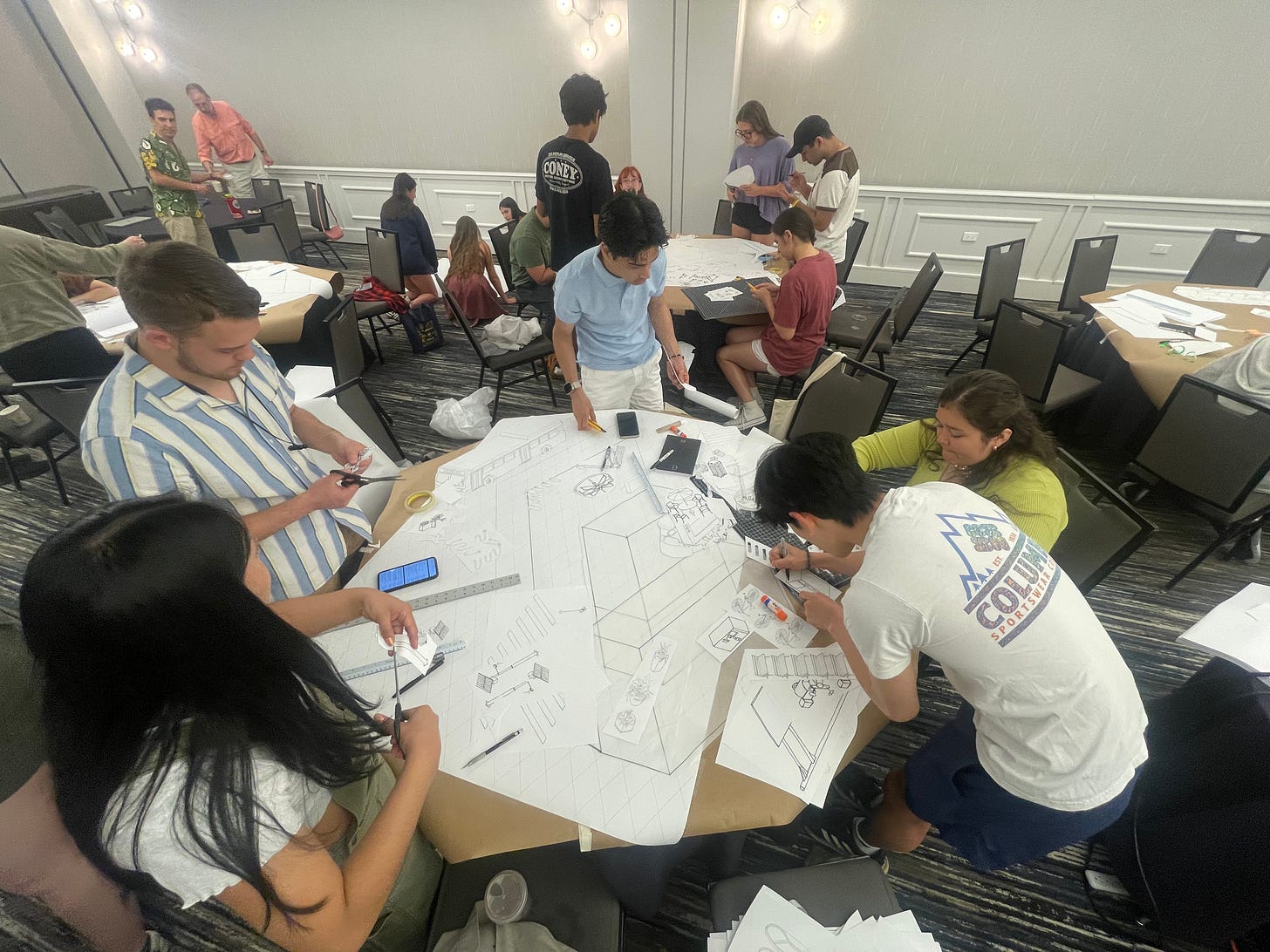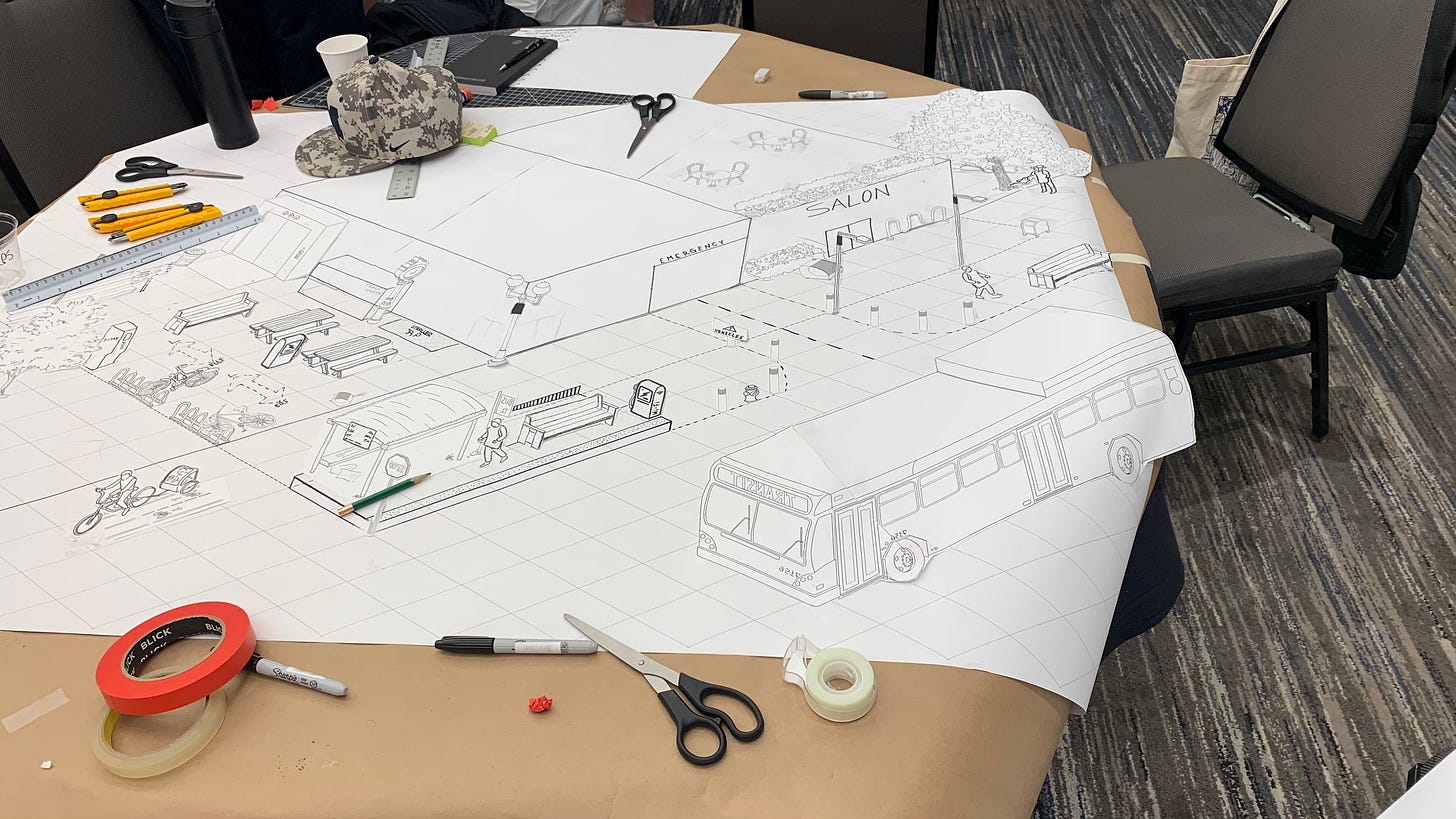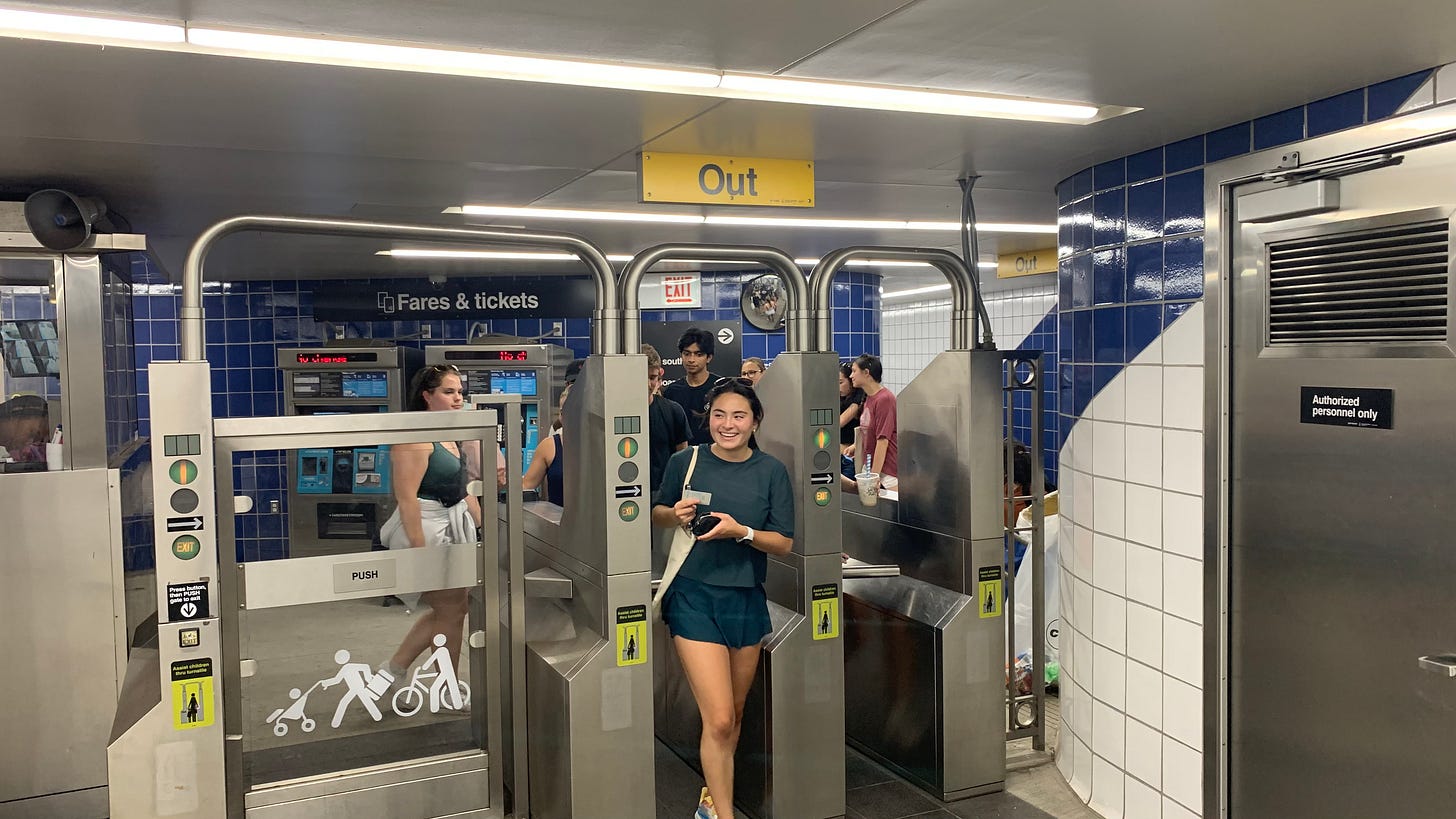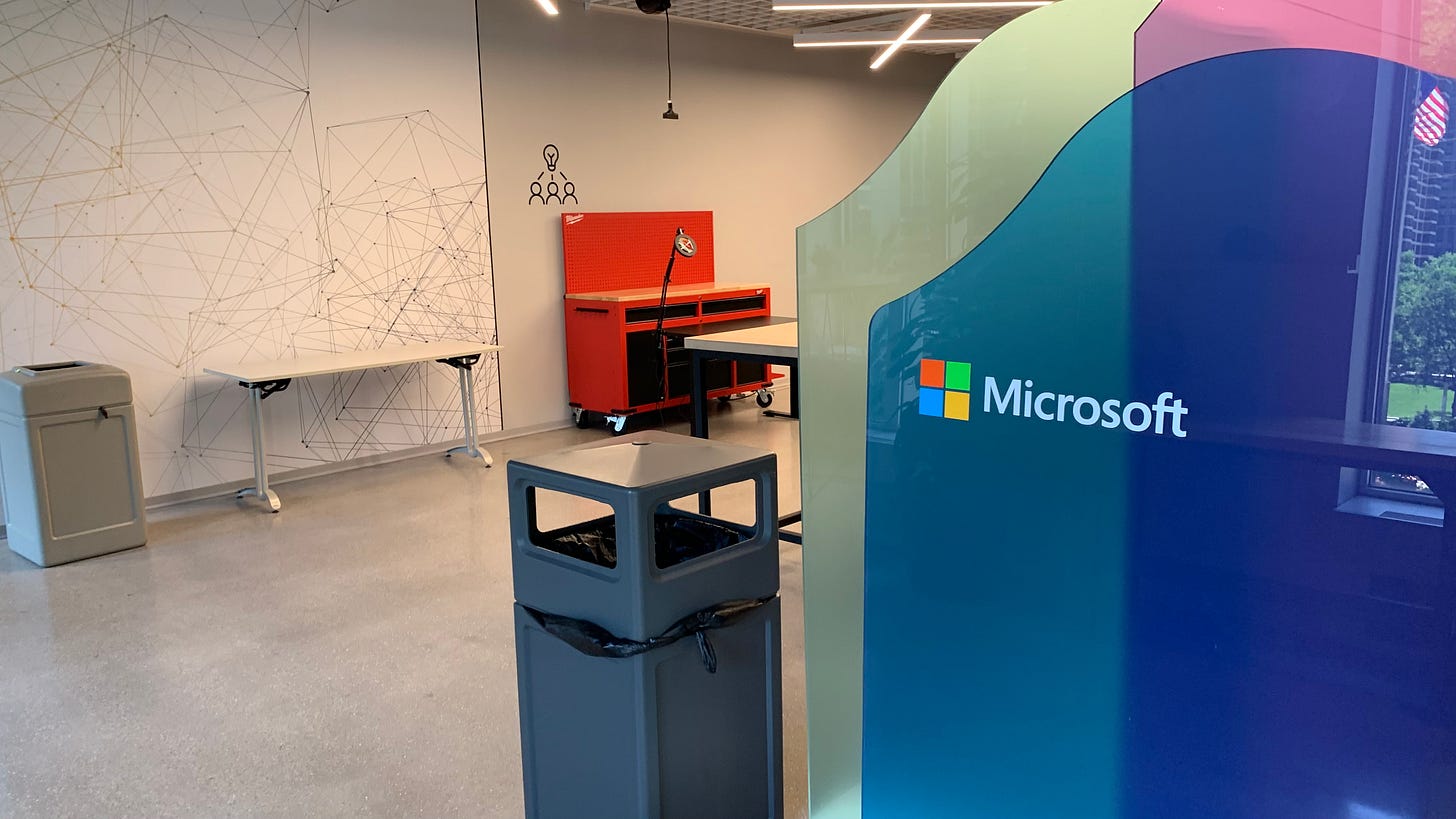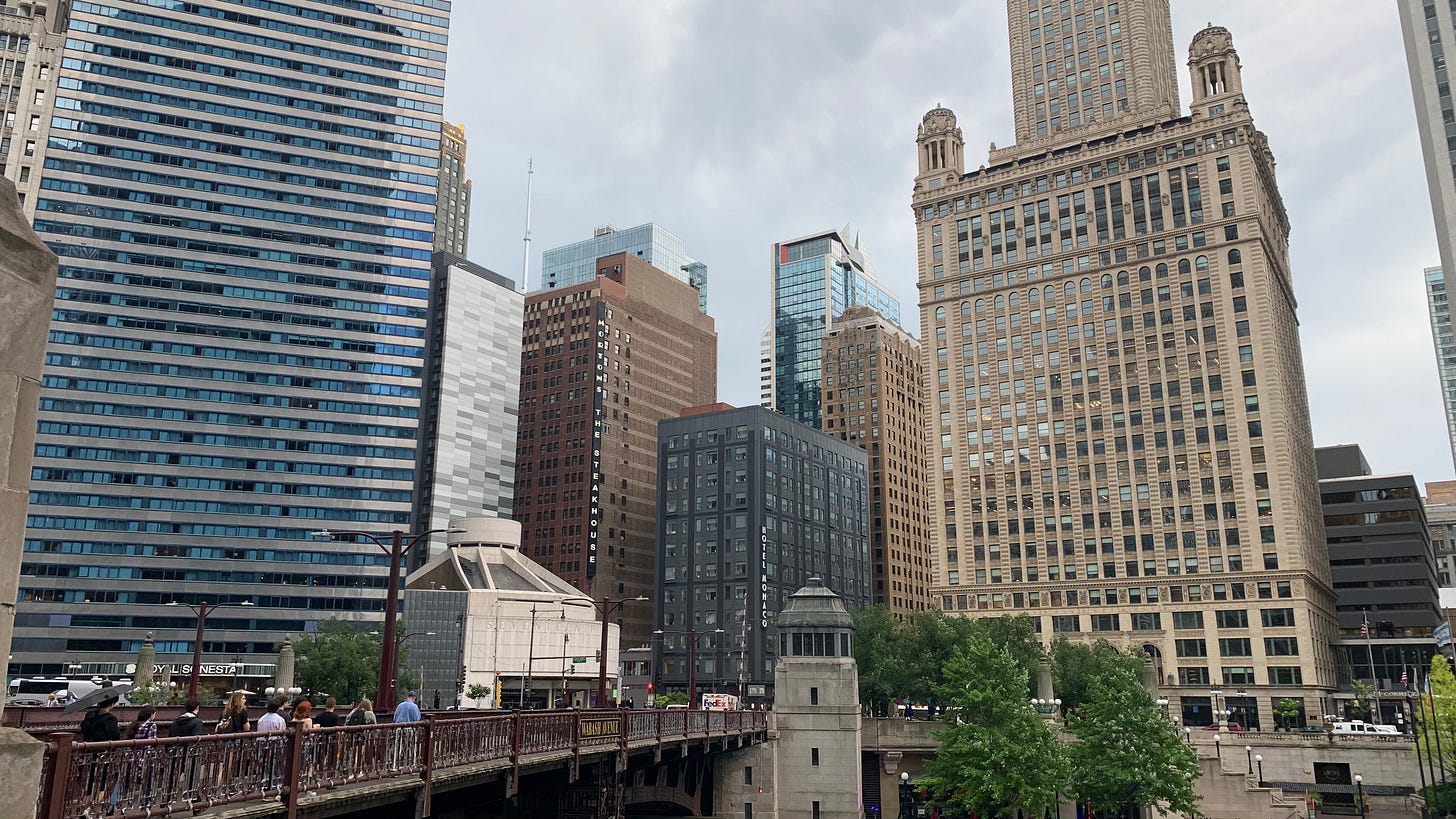Urban Technology at University of Michigan week 202
Transportation, Riders, and Equity in Chicago
Chances are, if you’ve been traveling on any interstate highways in the Midwest over the past month, you might have seen a 55-passenger bus ferrying our students to one city or another. This past week you had a chance to glimpse them pulling into downtown Chicago, the third and final stop for our newest Urban Technology students during their “Cities Intensive.” Following trips to Detroit to study parks and public spaces and Cleveland to study land use, our students came to the City of Big Shoulders to think about mobility and transportation — not only the current state of transit, but what might be possible in the future, and for whom.
Today’s newsletter is once again guest written by Phil D’Anieri, one of our Urban Technology faculty members, who paints a more vivid picture of our time in the Windy City…
💬 Hello! This is the newsletter of the Urban Technology program at University of Michigan, in which we explore the ways that data, connectivity, computation, and automation can be harnessed to nurture and improve urban life. If you’re new here, try this short video of current students describing urban technology in their own words or this 90 second explainer video.
🚌 Transit and Its Possibilities
Gazing out a coffee shop window onto Dearborn St. in Chicago’s River North neighborhood early on a weekday morning, here are the kinds of transportation you can see in action:
the Chicago Transit Authority’s 22 bus (with a Red Line “L” train stop a block away)
private automobiles
taxis and other ride-shares
bikes and e-bikes, privately owned or shared, in a fully-protected bike lane
e-scooters, privately owned or shared, in the same lanes
pedestrians crossing at intersections that have been reconfigured to limit the speed of turning cars, making them much safer for people in crosswalks
This scene doesn’t just make for a bustling view over one’s morning latte, it’s a sign of a street that works for many different kinds of users. And I’d argue that the simple test we can apply to just about any urban intervention is: does it work for lots of different kinds of folks?
At the same time, there is a lot more that goes into the accessibility of a given place than just the transportation modes available. What’s the cost, in time and money, of taking the bus to this street corner if your job in the coffee shop doesn’t pay enough to be able to live anywhere nearby? An e-scooter looks like a great solution for the resident of a pricey apartment zipping to the neighborhood gym for a morning workout. But it doesn’t do anything for the person who had to take two or three buses to get here, with unpredictable arrival times and uncoordinated transfers, such that personal exercise time has no room to even enter into the equation.
So a theme that ran through our busy Chicago agenda was trying to understand transportation not just as a quantitative thing, but as a qualitative thing as well — how it fits into the lives of different individuals and different communities, with what impacts, positive and negative, and for whom.
In four days and three nights, students:
completed a visual scavenger hunt through the Loop area downtown, with a critical eye on the infrastructure for walkers and cyclists.
in small groups, rode CTA buses and trains along a series of mock itineraries ("drop up off your child at this school, then travel to your job at this location…"), learning to navigate the system, assessing what works well and what doesn’t.
designed prototypes of a mobility hub that would link together a variety of shared travel modes in a space that would be especially sensitive to the needs of women and caregivers. In partnership with the Shared-Use Mobility Center, students turned our hotel meeting room into an impromptu design studio, and in the span of a few hours teams created a variety of solutions, shared their work with our SUMC partners, and responded to their thoughtful feedback.
visited with Palenque LSNA in the Logan Square neighborhood to learn about equitable transit-oriented development (TOD). Planners love TOD for the way it fosters density and reduces sprawl, but unless equity is in the foreground of those plans, TOD sites can easily become magnets for gentrification. Palenque has been at the forefront of leveraging community benefits — including hundreds of units of affordable housing and a park serving the area’s longtime residents — from Chicago’s reconstruction of its transportation hub in the neighborhood.
heard from David Leopold, a Taubman College alum who works with Microsoft connecting their technology to companies operating in a wide array of urban environments. Tech talk can get a little out there, of course, but David reminded us that the technology is there to improve the experiences of city residents and help them thrive — making it easier to pay for transit rides with a tap of your phone, integrating spatial data into city services, or creating precise, ground-truthed (literally!) digital maps of underground infrastructure to reduce the chances that a dig into a city street knocks out some essential service.
🖼️ Postcards from Chicago
These weeks: Budgeting. Racing to complete the Incomplete City. 3 out of 3 trips are complete! Somehow, already looking ahead to next year. 🏃




